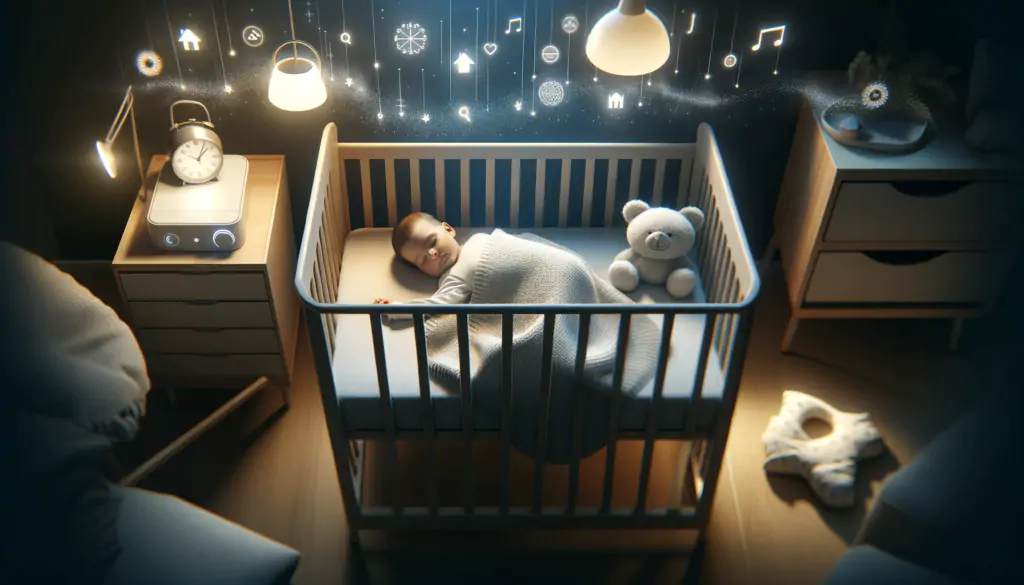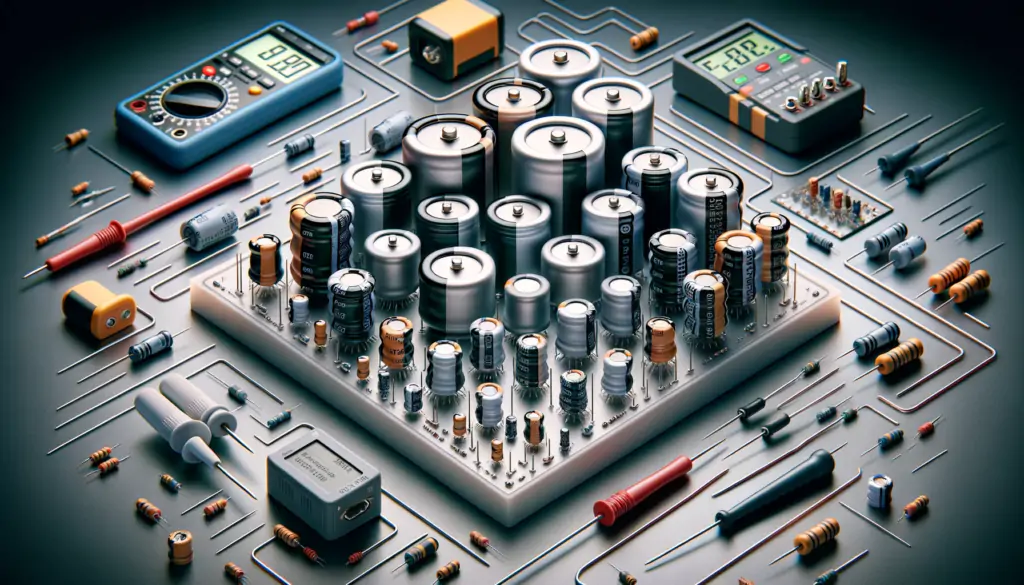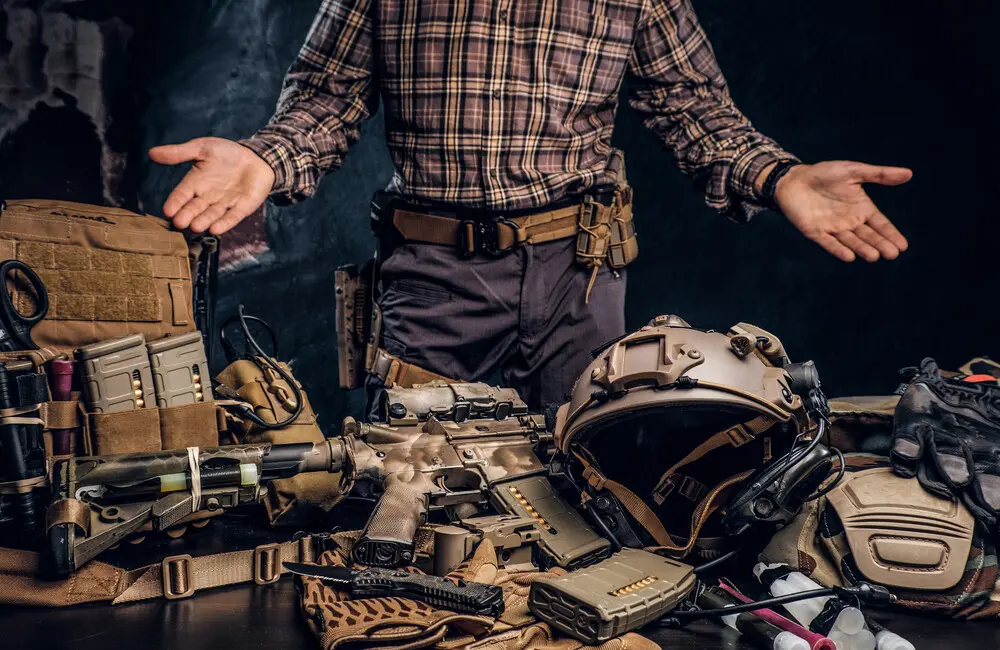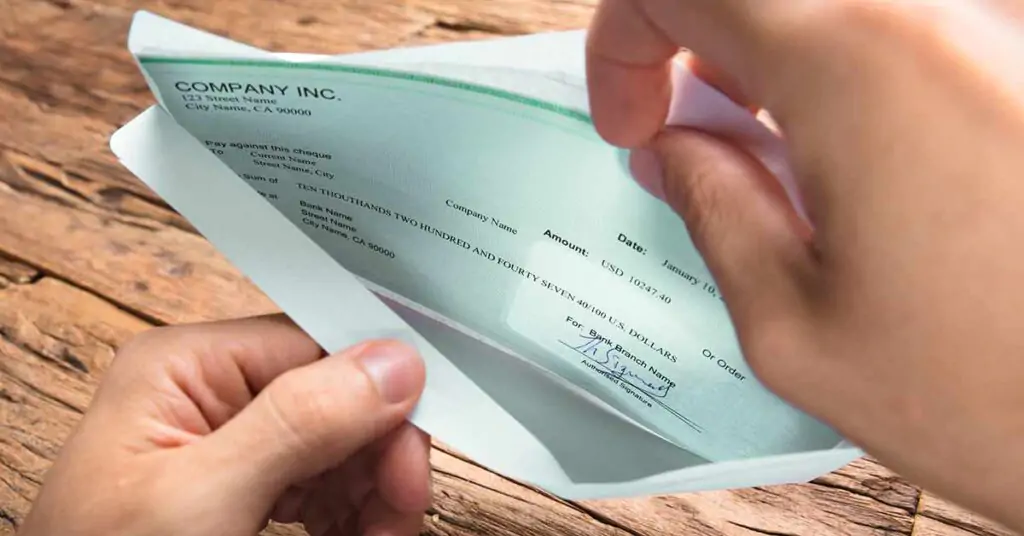1 Basic Step to Effortlessly Master: How to combine non nonpolar capacitors
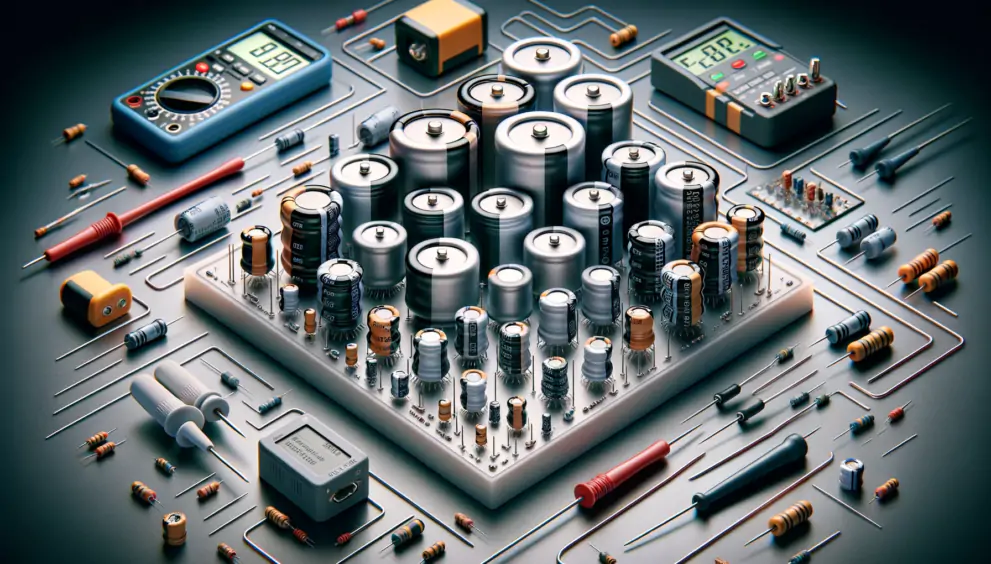
Table of Contents
Capacitors are the unsung heroes in the world of electronics, playing critical roles in stabilizing voltage and power flow in circuits. Among the diverse types available, nonpolar capacitors stand out due to their versatility and reliability in various applications. This blog post delves deep into the nuances of nonpolar capacitors, particularly focusing on how to combine non nonpolar capacitors effectively. Whether you’re a seasoned electronics enthusiast or a curious beginner, understanding this concept can elevate your projects to new heights.
Understanding Nonpolar Capacitors
Nonpolar capacitors are a unique breed in the capacitor family. Unlike their polar counterparts, they do not have a designated positive or negative side, making them more adaptable in AC (alternating current) applications. This attribute arises from their construction, which allows for the reversal of electrical charge without damage.
Comparison with Polar Capacitors:
- Polar Capacitors: Designed for DC (direct current) circuits, with marked positive and negative terminals.
- Nonpolar Capacitors: Suitable for both AC and DC circuits, offering more flexibility.
Common Applications:
- AC Circuits: Ideal for signal processing, audio systems, and more.
- Coupling and Decoupling: Used to connect two circuits or isolate them to prevent DC interference.

Basics of Capacitance and Capacitor Types
Understanding the basics of capacitance is crucial when dealing with any type of capacitor, including nonpolar ones. Capacitance is the ability of a capacitor to store an electrical charge, measured in Farads (F). This property depends on the physical characteristics of the capacitor, such as the surface area of the plates, the distance between them, and the type of dielectric material used.
Types of Capacitors:
- Electrolytic Capacitors: Known for high capacitance values, but polarized.
- Ceramic Capacitors: Small and nonpolar, suitable for high-frequency applications.
- Film Capacitors: Nonpolar, known for stability and reliability in a wide range of temperatures and frequencies.
- Tantalum Capacitors: Polarized, with high capacitance-to-volume ratio.
When focusing specifically on nonpolar capacitors, we commonly refer to ceramic and film types. They are often chosen for their stability and reliability across various frequencies and temperatures.

Why Combine Nonpolar Capacitors?
Before getting into how to combine non nonpolar capacitors let’s understand how Combining nonpolar capacitors can be advantageous in several scenarios:
- Increasing Total Capacitance: By connecting capacitors together, you can effectively increase the total capacitance available in a circuit.
- Adjusting Voltage Ratings: Combining capacitors can also help in achieving a desired voltage rating suitable for specific applications.
- Redundancy and Reliability: In critical applications, using multiple capacitors can provide redundancy, enhancing the reliability of the circuit.
However, it’s important to be aware of the potential drawbacks, such as increased circuit complexity and the need for precise calculations to ensure desired outcomes.
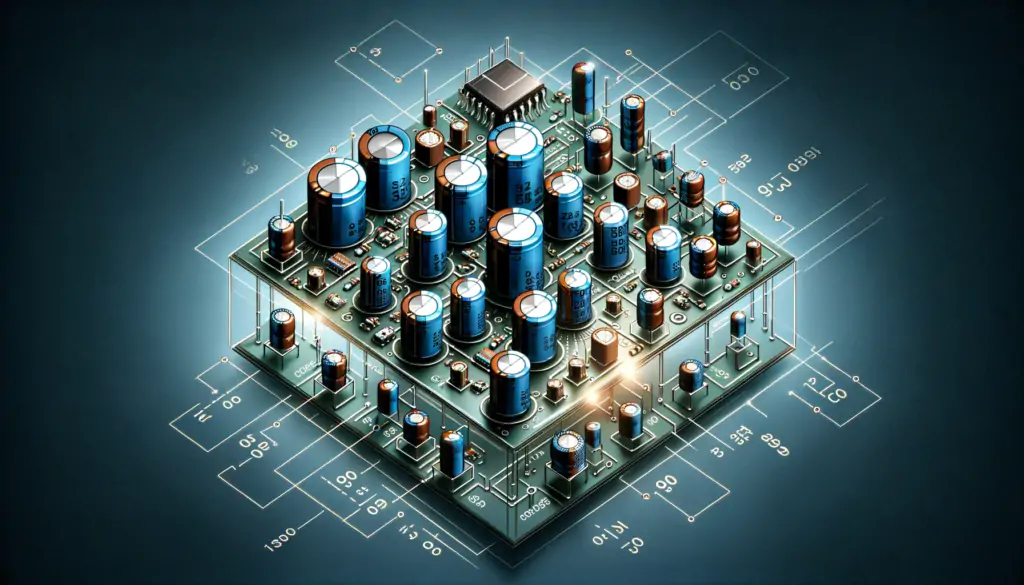
Series vs. Parallel Configurations
When combining nonpolar capacitors, you can choose between series and parallel configurations, each affecting the total capacitance and circuit behavior differently.
Series Configuration:
- Capacitors are connected end-to-end.
- The formula for total capacitance (( C_{total} )) is (\frac{1}{C_{total}} = \frac{1}{C_1} + \frac{1}{C_2} + … + \frac{1}{C_n}).
- Used when a higher overall voltage rating is required.
- Reduces the total capacitance.
Parallel Configuration:
- Capacitors are connected with all positive terminals together and all negative terminals together.
- The formula for total capacitance is ( C_{total} = C_1 + C_2 + … + C_n ).
- Increases the total capacitance, suitable for applications requiring higher capacitance but the same voltage rating.
Choosing the Right Configuration:
- For increased capacitance, go with parallel.
- For higher voltage ratings, opt for series.
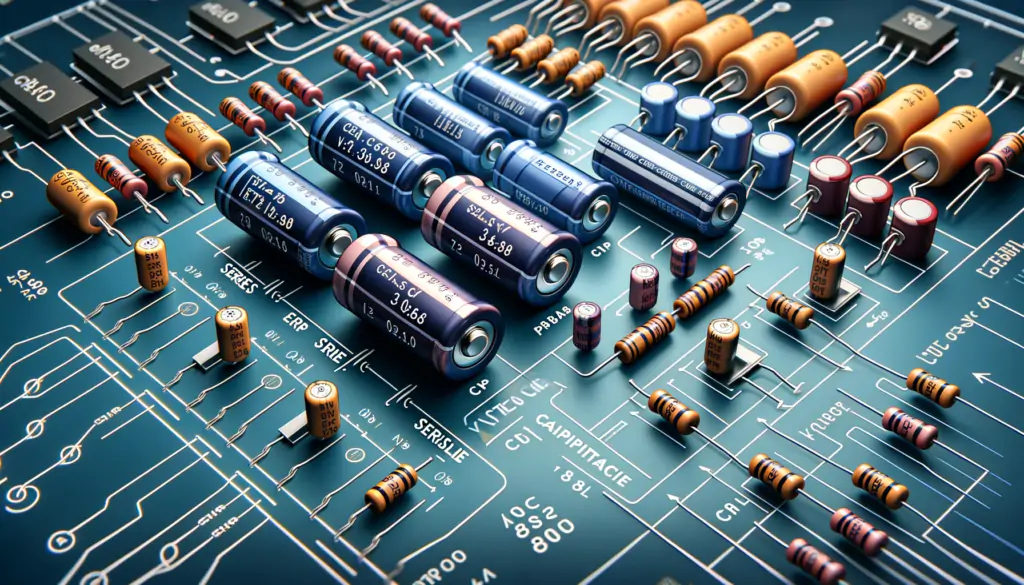
Step-by-Step Guide to Combining Nonpolar Capacitors
Combining in Series:
- Safety First: Disconnect power and discharge all capacitors.
- Connect Terminals: Connect the end terminal of one capacitor to the end terminal of the next.
- Secure Connections: Ensure that connections are solid and insulated.
- Calculate Total Capacitance: Use the series formula to determine the combined capacitance.
Combining in Parallel:
- Safety Measures: As with series, ensure all power is disconnected, and capacitors are discharged.
- Align Terminals: Connect all positive terminals together, and then all negative terminals.
- Ensure Robust Connections: Check for any loose connections.
- Calculate Total Capacitance: Use the parallel formula for the final capacitance value.
Tools and Materials Needed:
- Capacitors of chosen type and rating.
- Soldering iron and solder (for permanent connections).
- Breadboard (for temporary setups).
- Multimeter (for testing and verification).
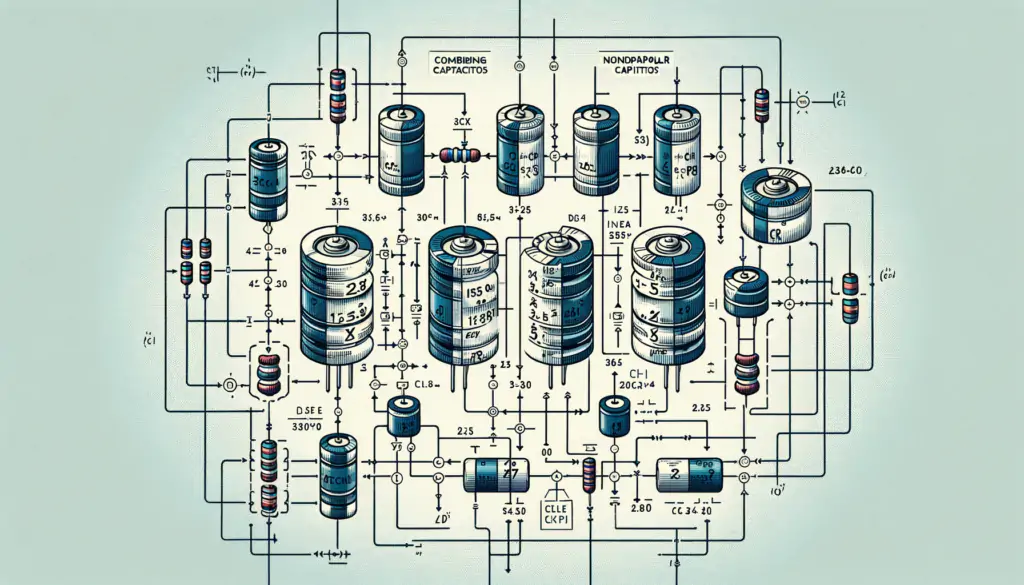
Troubleshooting Common Issues on how to combine non nonpolar capacitors
When combining nonpolar capacitors, you might encounter certain issues. Here’s how to troubleshoot them:
- Inadequate Total Capacitance: Double-check your calculations and connections. Ensure you’re using the correct formula for series or parallel configurations.
- Circuit Instability: This can be caused by poor connections. Re-examine solder joints or breadboard contacts.
- Unexpected Circuit Behavior: Ensure all capacitors have similar voltage ratings and are correctly oriented if they have any polarity indication.
Professional Help: If problems persist, it might be wise to consult with an electronics professional.
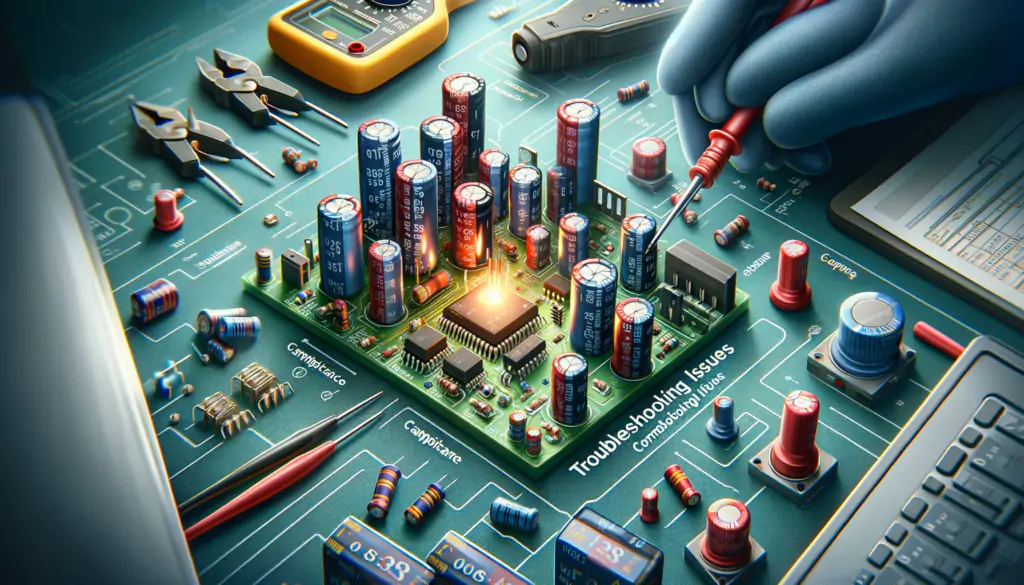
Real-world Applications
Nonpolar capacitors find their use in a variety of practical applications:
- Audio Equipment: In speakers and audio circuits, for signal coupling and decoupling.
- Power Supplies: For filtering and smoothing out voltage fluctuations.
- Radio Frequency Circuits: In tuning and signal processing applications.
A study in the Journal of Advanced Electronics demonstrated how combining nonpolar capacitors in parallel significantly improved the sound quality in an audio amplifier by providing a smoother power supply.
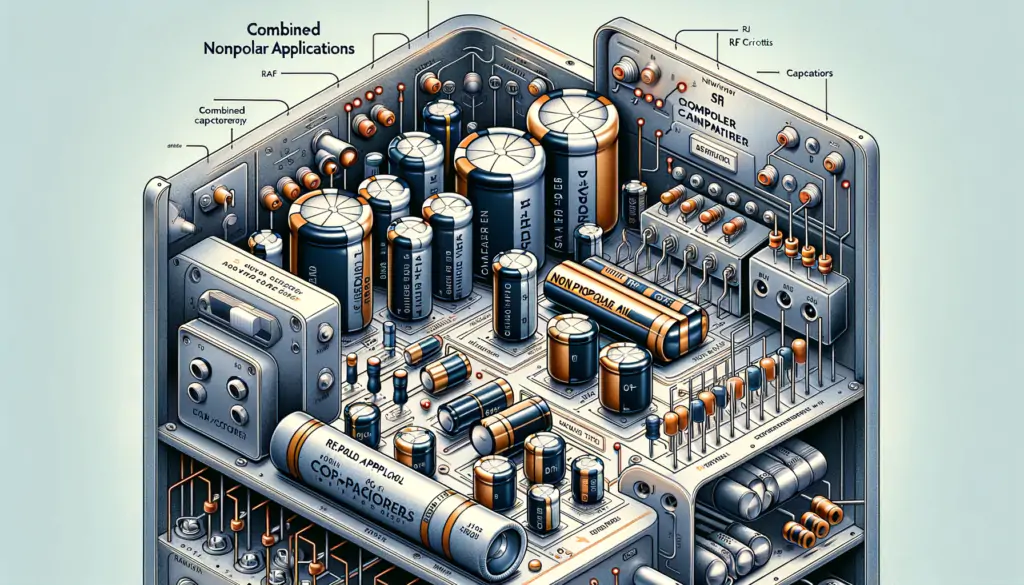
Maintenance and Longevity of Combined Capacitors
To ensure the longevity of your combined nonpolar capacitors:
- Regular Testing: Use a multimeter to check capacitance and integrity.
- Environmental Factors: Keep them away from extreme temperatures and moisture.
- Replacement Schedule: Replace capacitors periodically, especially in high-stress applications.
Disposal and Recycling: Properly dispose of or recycle old capacitors according to local regulations.
Conclusion
Combining nonpolar capacitors is a skill that can significantly enhance the performance of various electronic circuits. Whether you’re increasing capacitance, adjusting voltage ratings, or ensuring redundancy, the correct application of this technique can lead to more efficient and reliable electronic designs. Remember, the key is to understand the requirements of your specific application and apply the principles of capacitor combination accordingly.
Additional Resources
- Electronics Tutorials – In-depth guides on capacitors and other electronic components.
- All About Circuits – A comprehensive resource for electronic theory and practice.
- IEEE Xplore – For accessing detailed case studies and research papers.
This blog post aimed to provide a thorough understanding of how to combine nonpolar capacitors effectively. By following the guidelines and troubleshooting tips provided, you can optimize your electronic projects for better performance and reliability. Remember, a strong foundation in the basics of electronics, combined with practical application, is key to mastering any aspect of this field.
Frequently Asked Questions
Q1: Can nonpolar capacitors be used in place of polar capacitors?
A1: Nonpolar capacitors can sometimes be used in place of polar capacitors, especially in AC circuits. However, it’s important to consider the specific requirements of the circuit, as polar and nonpolar capacitors have different characteristics.
Q2: How does combining capacitors affect their overall lifespan?
A2: Combining capacitors doesn’t inherently affect their lifespan. However, ensuring proper configuration and avoiding overvoltage can help maximize their longevity.
Q3: Is it safe to combine different types of nonpolar capacitors?
A3: While it is technically possible to combine different types of nonpolar capacitors, it is crucial to ensure they have compatible voltage ratings and are suitable for the intended application.
Q4: What is the most common mistake when combining nonpolar capacitors?
A4: One common mistake is miscalculating the total capacitance, especially when combining capacitors in series. It’s crucial to use the correct formula and double-check calculations.
Q5: Can combining nonpolar capacitors improve circuit performance?
A5: Yes, combining nonpolar capacitors can improve circuit performance by providing higher capacitance, better voltage handling, or increased reliability.
Q6: Are there any special considerations when using combined nonpolar capacitors in high-frequency circuits?
A6: In high-frequency circuits, it’s important to consider the equivalent series resistance (ESR) and inductance of combined capacitors, as these factors can affect circuit performance at high frequencies.
Q7: How do environmental conditions affect combined nonpolar capacitors?
A7: Extreme temperatures, humidity, and physical stress can impact the performance and lifespan of capacitors. It’s important to choose capacitors suitable for the operating environment and to protect them from harsh conditions.
 English
English 
